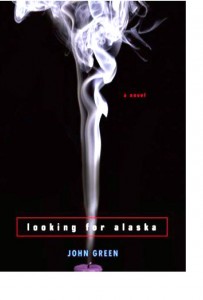The world of mischief, smoking, drinking, and secrets that Miles Harper, the main character in Looking for Alaska by John Green, gets swept into created a controversy as to whether the novel pushes the envelope, or shreds it.
Looking for Alaska was first published in March 2005 and since then has gone on to win the 2006 Michael L. Printz Award, an honor awarded by the American Library Association for outstanding young adult literature. John Green is also well known for writing The Faults in our Stars.
On the surface, Looking for Alaska is about the adventures Miles and his friends experienced at their boarding school in Alabama, where they developed smoking habits, dabbled in relationships with the opposite sex, and played pranks on the Dean of Students, also known as the Eagle.
Miles developed intimate feelings for his friend Alaska Young, the green-eyed bookworm who introduced him to the famous last words of Simón Bolívar, “how will I ever get out of this labyrinth?” This became the central question of the novel, as the characters dealt with major life dilemmas after a traumatic occurrence.
Some parents refused to let their kids read Looking for Alaska when it became a part of the high school curriculum in their area because of very brief sexual content. Green had allegedly been trying to put pornography in the hands of children.
Their purpose was “to draw contrast between that scene, where there’s a lot of physical intimacy but is ultimately very emotionally empty and the scene that immediately follows it, where there’s not a serious physical interaction but there’s this intense emotional connection,” responded Green.
Looking for Alaska is great from a philosophical perspective and is written in a way that appeals to young adults. Entertaining as well as enlightening, the novel deals realistically with the problems teens face without simplifying them.


